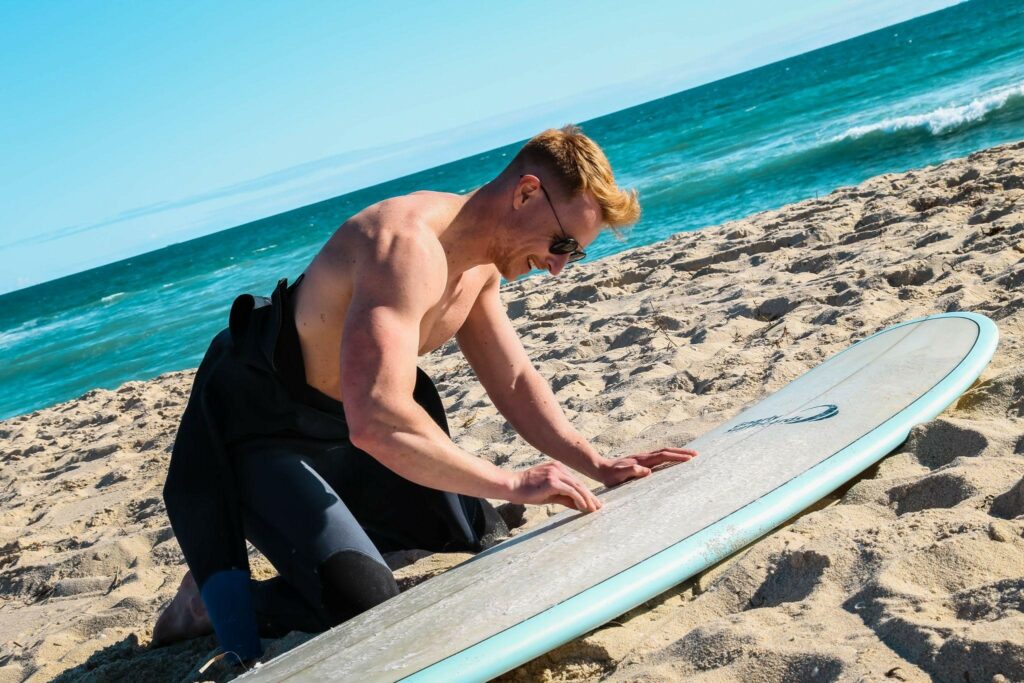Do kayaks need waxing?
Every paddler has a kayak in their store for a significant period because the kayaks are primarily used seasonally. It is reported that there were roughly 18.12 million kayakers in 2020 in the United States, up from 16.62 million the year before. This figure assures us that there are a vast number of kayaks locked up in stores.
Leaving your kayaks in your store and forgetting all about them till you need them might result in deformation of the hull and exposure to moisture and dirt.
So, waxing is the best way to go if you want to take care of your kayak. Waxing your kayak will offer protection from UV ray damage and make cleaning it easier.
You can use a product specifically for kayaks or vehicle wax to complete the task. A kayak that has been waxed will stay cleaner for longer and require less frequent washing.
Waxing a kayak is generally a good idea from a maintenance perspective. Every kayak requires a little maintenance to ensure longevity and retain the kayak hull’s aesthetic appeal for many years. If you want to wax your kayak to increase its speed, Magic surface treatments are unlikely to make a difference.
However, a smooth surface will be helpful. The smoother, the better. You don’t want any lumps, ridges, or dried-on gunk obstructing the water’s ability to flow over your hull. A protective covering made of wax is used on aluminium and fibreglass hulls. It retains the hull’s form and stops it from absorbing water. Remember that carnauba or polymers work well for this purpose, but silicone does not.
This article will discuss the materials that are good for waxing and the best way to wax your kayak.
The results of waxing kayaks also depend on the material of the hull. Applying kayak wax on polyethene or inflatable hulls may not always be essential and may even be a waste of time. One reason is that wax won’t adhere to a polyethene hull very well. A smoother surface offering less resistance and speed improvement is perhaps the most exciting advantage of waxing a kayak, but it may not be achievable.
However, a plastic kayak, such as an inflatable kayak or one made of polyethene, can still benefit from the protective layer given during the waxing process. Given how vulnerable plastic is to UV radiation, a UV protection coating can aid in maintaining the hull’s structural integrity and gloss.
If you were asking your friends or family about waxing your baby kayak, they might oppose you mostly with two arguments against coating your kayak hull with wax.
The first logic is that applying wax is time- and money-consuming. This reasoning seems absurd to me. Finding polish that costs more than $25 requires a lot of searching. Whether your kayak costs $400 or $4,000, just $25 a year to protect it is a great deal. (This might be true if you own a fleet of kayaks where the cost of regularly waxing your kayaks is way too high.) The time-consuming part doesn’t take long to apply, wait, and buff, but it takes some time. I believe the shine on your kayak is worth every minute. Therefore, the first argument against waxing the hull of your composite kayak is unjustified.
The second logic is that wax reduces your kayak’s speed. This might or might not be accurate. According to one school of thought, applying wax makes your kayak’s hull surface smoother, slicker, and faster than it should be. The opposing school of thought contends that wax makes water beads accumulate on the hull and increases surface tension, which slows down your boat. Experienced kayakers say none of these concepts accurately capture reality. Some items that truly aid in the faster gliding of a kayak are shallow V-design and less rocker. Experts believe speed restrictions are more than made up for by the hull protection that a layer (or two) of wax provides. Even if it does make a difference, it is almost negligible.

What are the supplies needed for waxing a kayak?
So, there you have it; kayak wax has its advantages, mainly when used on composites. I hope the information we’ve covered has convinced you to include waxing in your seasonal maintenance.
Are you thinking of giving your kayak a beauty bath? We’ve got you covered. Let’s take some time out for your baby kayak, collect all the materials, prepare for the job, and start working.
The following materials are required for waxing a kayak:
- A Bucket
- A pair of microfiber towels
- A sponge
- A garden hose for water and a fresh water supply
- Soapy water or boat wash for all purposes (kayak cleaner)
- Marine wax (Confirm that it is appropriate for composite kayaks.)
- UV protectant

What is the best way to apply wax to your kayak?
If you have your supplies, some free time off the books, and good-quality Marine wax, wait no more!! Follow the steps mentioned below to make the most of your time.
Step 1: Start with washing your kayak. Use your hose to clean your kayak from sand, gravel, and salt deposits.
Step 2: In your bucket, make sudsy bubbles. Add some detergent to the bucket, then use the garden hose to create suds. Follow the directions on the container if you’re using a detergent designed specifically for maritime vessels. Avoid using dish soap. Your boat’s finish will deteriorate due to this substance.
Step 3: Bubble bathe your kayak. Scrub your kayak thoroughly with the sponge and sudsy water. Pay close attention to the hull’s trouble spots. To get the most significant impact out of the application, you need a surface that is as clean and smooth as possible.
Step 4: Wash your kayak well. Run water over it to remove the leftover suds or mud accumulated in the cracks.
Step 5: Give your kayak some time to dry naturally. Allow your kayak to air dry for an hour, or use towels to hasten the process. However, the best way is to let it air-dry as towels might leave lint on the hull.
Step 6: Apply wax to your boat’s hull. If you’re using a spray wax, spray a small to medium-sized area of the hull and then spread the wax evenly using a microfiber cloth. (Keep in mind that your goal is to create a wax barrier around the hull. There is nothing you are attempting to rub off.)
Repeat this procedure around your kayak’s hull. If you’re using paste wax, take a small amount and distribute it evenly over a sizable portion of the hull using a microfiber cloth. Repeat this process until the boat’s whole hull is covered in wax.
Step 7: Allow enough time for the wax to dry. This could range from 20 minutes to more than an hour. Follow the directions provided by the manufacturer on the container.
Step 8: Buff your hull to a brilliant shine. Use a fresh, clean microfiber cloth to buff off the fogging and bring out the shine once the wax has appropriately dried.
Your kayak may benefit from more than one coat of wax if you frequently scrape the hull against obstacles while paddling. If this is the case, add another layer of polish to the dried hull, let it set, and then buff it off to remove the haze. This additional process is entirely optional. Just be careful not to use too much wax or too much pressure. The goal is to leave a thin layer on the kayak, and you don’t want to damage anything.
Step 9: Apply your preferred UV protective spray. You’ve reached the last step, whether you skipped waxing the kayak because you have a plastic-hulled kayak or went through waxing the kayak.
Giving the kayak’s hull an additional layer of UV protection is the final step in any kayaks, wax or no wax maintenance process. Any UV plastic protectant spray will do, but we recommend using good-quality ones as they protect your kayak for a longer period of time.
Final Thoughts
Using kayak wax is the way to go, whether your goal is to improve the appearance of your kayak or add a crucial layer of protection to increase the hull’s durability. And while waxing a kayak might be time-consuming, it’s well worth it in the long run, much like primary kayak care and management. If you want to keep your ‘yak in top condition for many years, you must take proper care of it.
Remember, plastic-hulled vessels don’t require waxing, unlike composite kayaks. However, it is still strongly advised to clean and use UV protection. No, forget about that; it’s compulsory.
On that topic, I sincerely hope my how-to-wax-a-kayak advice helps you lengthen your kayak’s lifespan, whether composite or not, and simplifies the procedure.
Do share with us if you plan to wax your kayak. Or would you like to share some advice about it?
Leave your feedback. And feel free to share this tutorial with others if you think they might find it useful.